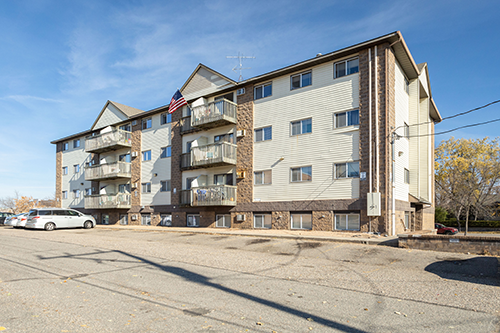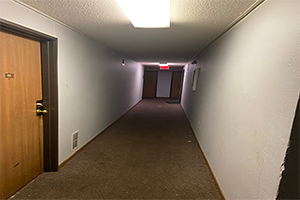March 21, 2023 • 4 min read • Real Estate
Starting in 2020, the rise of COVID-19 burdened individuals with a collective fear for their safety and that of their loved ones. This initial fear was accompanied by a shock of uncertainty that rippled through the majority of industries and businesses. A massive shift was in store for the real estate and housing world, as well.
“Landlords were nervous—I know I was—and tenants were also panicking as they awaited a stimulus response from the government,” recalled Jasdeep (Jesse) Khera, Yieldwink Founder and CEO. “Needless to say, the change was swift.”
In addition to stimulus checks, financial unemployment assistance was paid to laid-off workers. The government did not, however, make rent payments directly to landlords. Moreover, the implementation of nationwide eviction moratoriums made it impossible for landlords to evict non-paying tenants during this time—leaving landlords without the usual rental revenue needed to pay their own compounding bills. Many landlords were given the fortunate opportunity to postpone their mortgage payments (depending on their loan issuer) until further notice (a period of forbearance). However, many tenants piled up months and months of unpaid rent payments, with no intention of repaying their landlords. Upon the removal of the moratorium, eviction filings and the loss of rent were simultaneously costing landlords a fortune.
“We saw this problem as an opportunity,” Jasdeep said.
Securing Deals During the Pandemic: A New Approach
During the pandemic, Jasdeep adjusted to this COVID-induced industry shift by revamping Yieldwink’s search criteria for investment opportunities. Jasdeep had previously only offered proposals to landlords who purchased their B-class properties 10 (or so) years prior, as these landlords were usually more inclined to sell. After COVID-19 hit, he began to shift his search criteria to include buyers who purchased properties more recently (1-4 years prior) and to also consider value-add C-class properties. Yieldwink targeted areas of the United States that had a cushion in rent-to-income ratios. Renters, on average, should spend no more than 30% of their monthly income on rent. Areas in which the average rent-to-income ratio was lower than 30% was, in Yieldwink’s view, an opportunity.
With landlords stuck at home due to the stay-at-home order, Jasdeep decided to pick up the phone and start calling them. Within a week, he met Carl (name changed for privacy). Carl was selling all his properties in the North and moving down South to realize his dreams of retirement. Carl was 70+ years old and, by all accounts, an absentee landlord. The properties that Jasdeep had his eyes on were two multifamily buildings located in St. Cloud, Minnesota, one hour northwest of Minneapolis.
“These properties were a mess. Disgusting carpets, cigarette smoke-coated hallways, garbage outside of the dumpsters—you get the picture,” Jasdeep said. “The tenants were an even bigger challenge—lots of unfulfilled/pending evictions and non-payers. Management had absolutely no handle on the properties for years. The bones of these buildings, however, were in excellent shape. It was a gold mine covered in coal.”


Negotiations & Final Deal
Jasdeep and Carl initially batted around a potential purchase price of $3,500,000 (for both properties) with no knowledge of the current building financials. After Carl’s building financials came to light, Jasdeep took a pause. It turned out that this landlord was bleeding cash, and purchasing the properties for $3,500,000 would transfer this hemorrhage to the next landlord. The pair discussed a variety of alternative options, including seller financing, a master lease, and etc. Carl was in a hurry to use the profits from this sale to purchase a new property in Florida. He needed to close.
“My goal was to come up with a deal that benefited us both,” Jasdeep said.
While Jasdeep was analyzing the properties to determine a fair new purchase price, he learned that Carl purchased these properties only one year prior, at about $70,000 per unit. The on-site maintenance person shared with him that the buildings were previously in much worse shape than they currently were in. Carl and his management team were able to successfully replace many hostile tenants and install new cameras and boilers.
After Jasdeep concluded his due diligence, he proposed a new offer: $2,980,000. Jasdeep included contingencies in the contract, stating that all non-payers must be evicted prior to closing. Carl signed the contract and, six months later in October of 2022, they closed on the property.
Yieldwink purchased the properties at 55% occupancy (in an area that had an average 98% occupancy). Four months after closing, the property is cash-flowing. Occupancy is up to 98% in one of the properties, and the other is nearing 70%. Regarding lending financials, Jasdeep also received favorable lending terms from a local bank in Minnesota (30-year amort, one-year I/O, and 5.4% IR). Based on the purchase price and Yieldwink’s projections, these properties are now on track to see a (stabilized) 9%+ cap rate based on the purchase price.
“Since takeover, our team has replaced all carpets and lighting in common area hallways and installed brand new card-activated washers and dryers. We’ve rehabbed and rented multiple units thus far- some of which were rented while under rehab! We replaced all older toilets and some shower heads with high-efficiency, energy/water-saving models. I believe in the broken windows theory,” Jasdeep said, “and find it incumbent on us to change the environment for the better of all residents. New unit rentals are now being rented 13.6% higher than what our initial model had accounted for.”


Onto the Next Deal
The COVID-19 pandemic caused a significant shift in the real estate and housing industry. Some landlords were struggling to maintain a positive cashflow and debt service coverage ratio (DSCR), which caused many to consider selling their properties earlier than expected. Some landlords expecting to refinance were also unable to do so as rates climbed to new highs. Yieldwink CEO Jasdeep Khera saw this problem as an opportunity and shifted the company's investment opportunity search criteria. This led Yieldwink to purchase two value-add multifamily buildings in St. Cloud, Minnesota.
Jasdeep was able to negotiate a highly favorable purchase price, with the properties projected to yield a 9% cap rate after stabilization. This investment opportunity was open to investors on the Yieldwink platform for only two weeks (the $1,200,000 raise was met and the offering was closed). The pandemic caused significant challenges in the real estate and housing industry, but it also created opportunities for those up for the challenge.
“Fluidity in our strategy is what allowed this deal to take place,” Jasdeep said. “We are keeping our minds open to new shifts in the marketplace that may take place in the future.”
Interested in learning how to stabilize a struggling property? Read about cost-saving tips for multifamily investors in one of our previous articles.
Enjoyed the read? Sign up for our newsletter at the top of this page.
Make sure to follow us on:
Yieldwink is a digital platform linking investors to highly vetted private investments in an effort to lower volatility, provide higher levels of income, and enhance returns.
 Yieldwink
Yieldwink

